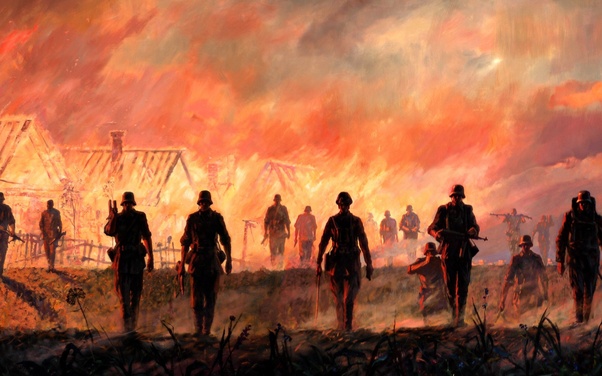World War I and World War II were two of the most devastating conflicts in human history, with millions of people losing their lives and entire countries being torn apart. The connections between these two wars can be seen in various aspects, including the causes, the aftermath, and the impact they had on societies across the globe. It is interesting to explore these connections and how they can be understood through biblical verses.
One of the key connections between World War I and World War II is the idea of conflict and violence. In both wars, nations engaged in fierce battles that resulted in unimaginable loss and destruction. This can be seen in the Bible verse from Matthew 24:6-7, which states, “You will hear of wars and rumors of wars, but see to it that you are not alarmed. Such things must happen, but the end is still to come. Nation will rise against nation, and kingdom against kingdom.” This verse speaks to the reality of global conflicts and how they are a part of the human experience.
Another connection between the two world wars is the presence of powerful leaders who sought to establish dominance and control over others. In both wars, figures like Kaiser Wilhelm II and Adolf Hitler rose to power with grand visions of empire and conquest. The Bible verse from Proverbs 29:2 reflects this idea, stating, “When the righteous thrive, the people rejoice; when the wicked rule, the people groan.” This verse highlights the impact that oppressive leadership can have on societies and how it can lead to suffering and despair.
The aftermath of World War I played a significant role in setting the stage for World War II. The Treaty of Versailles, which ended the First World War, imposed harsh penalties on Germany and created long-lasting resentment and instability in the region. This can be understood through the Bible verse from James 4:1-2, which says, “What causes fights and quarrels among you? Don’t they come from your desires that battle within you? You desire but do not have, so you kill. You covet but you cannot get what you want, so you quarrel and fight.” This verse highlights how unresolved conflicts can lead to further violence and turmoil.
The rise of nationalism and the quest for power were also driving factors in both world wars. Countries like Germany and Japan sought to expand their territories and exert their influence over other nations, leading to widespread destruction and suffering. The Bible verse from 1 John 2:16 speaks to this issue, stating, “For everything in the world—the lust of the flesh, the lust of the eyes, and the pride of life—comes not from God but from the world.” This verse highlights the dangers of pride and ambition, which can lead to destructive behavior and conflict.
The devastation caused by World War II was unparalleled, with entire cities reduced to rubble and millions of lives lost. The Bible verse from Psalm 23:4 offers comfort in times of darkness, stating, “Even though I walk through the darkest valley, I will fear no evil, for you are with me; your rod and your staff, they comfort me.” This verse reminds us that even in the midst of great suffering, there is hope and strength to be found in faith and perseverance.
The legacy of World War II continues to impact the world today, with lessons learned from the past shaping our present and future actions. The Bible verse from Romans 12:18 urges us to seek peace and reconciliation, stating, “If it is possible, as far as it depends on you, live at peace with everyone.” This verse emphasizes the importance of forgiveness and understanding in building a more peaceful and harmonious world.
In conclusion, the connections between World War I and World War II are complex and multifaceted, with themes of conflict, power, and devastation running through both wars. By examining these connections through biblical verses, we can gain a deeper understanding of the impact of these conflicts on society and the importance of seeking peace and reconciliation in a world scarred by war. Through reflection and contemplation, we can strive to create a better future and honor the memory of those who suffered in the wars of the past.

